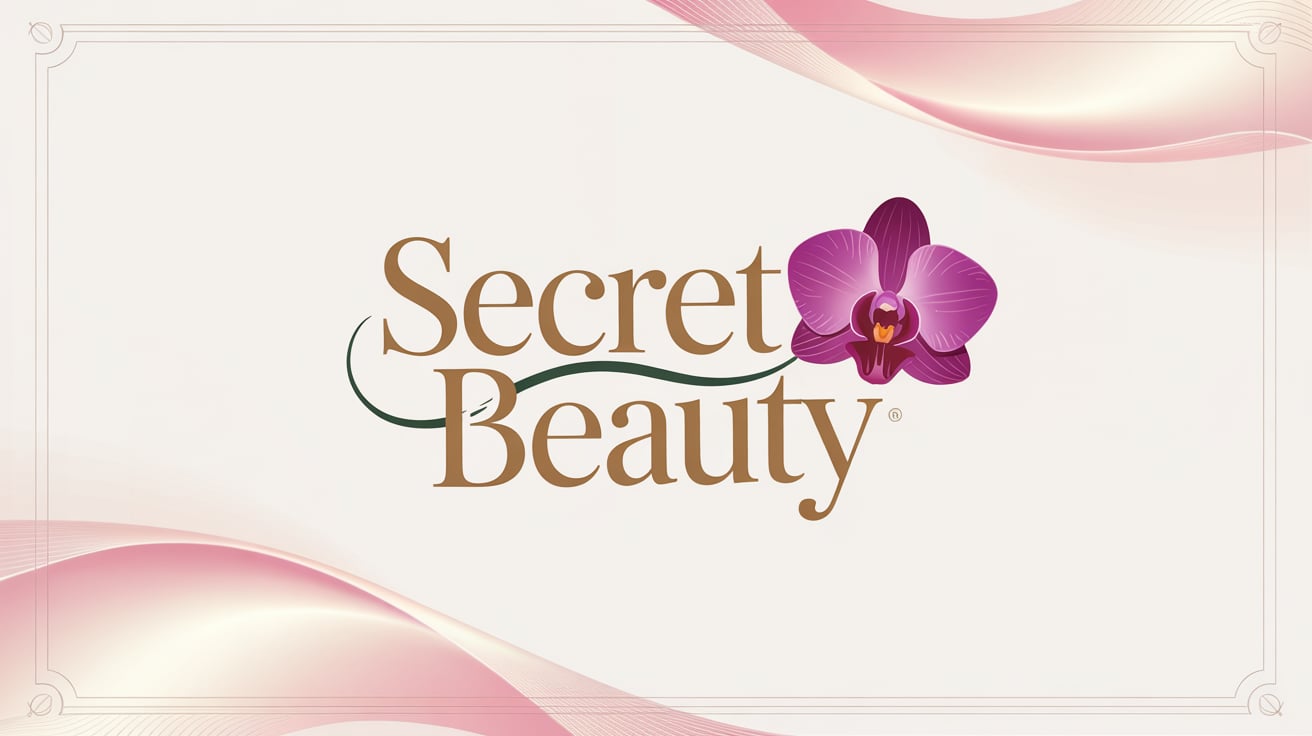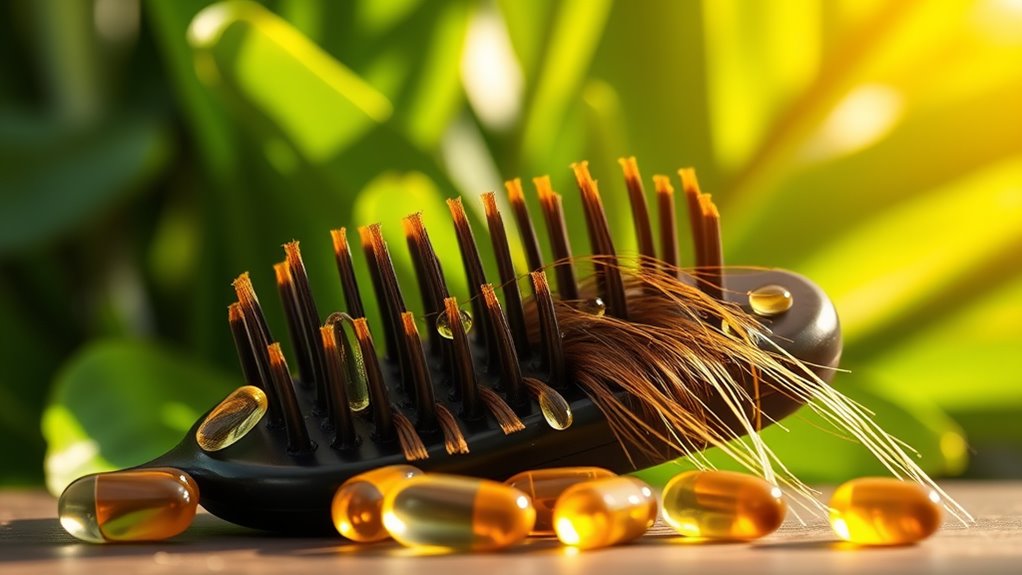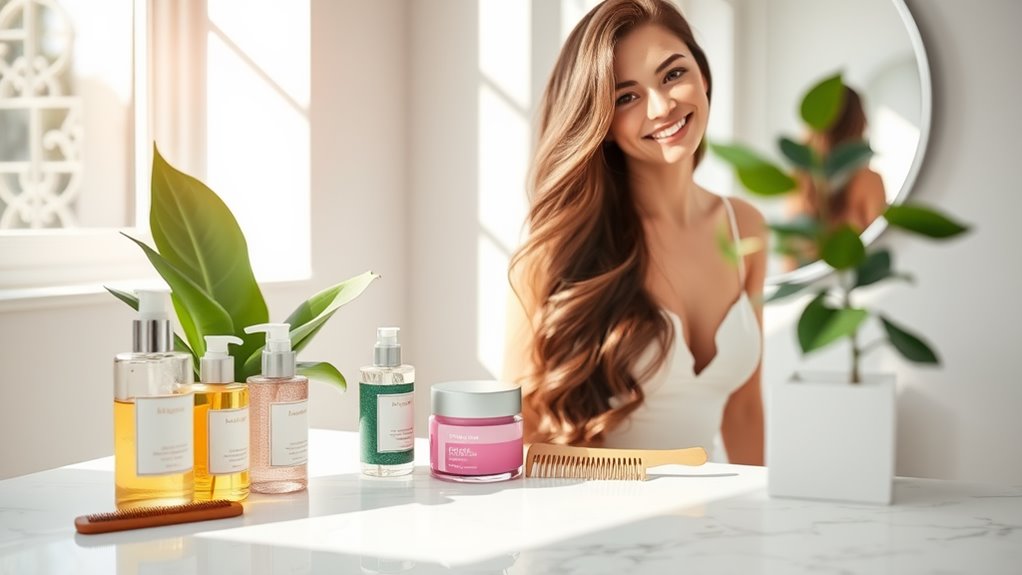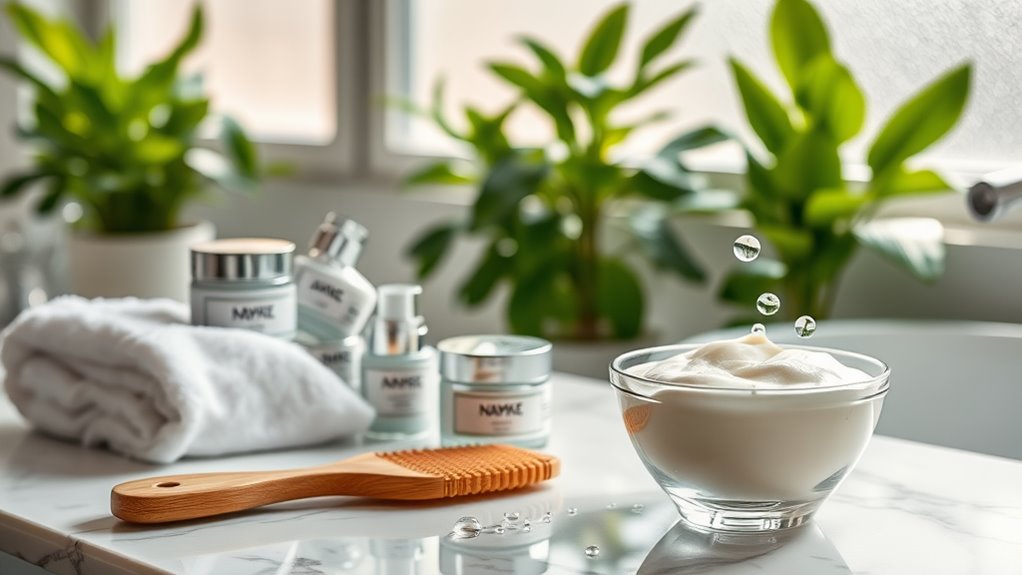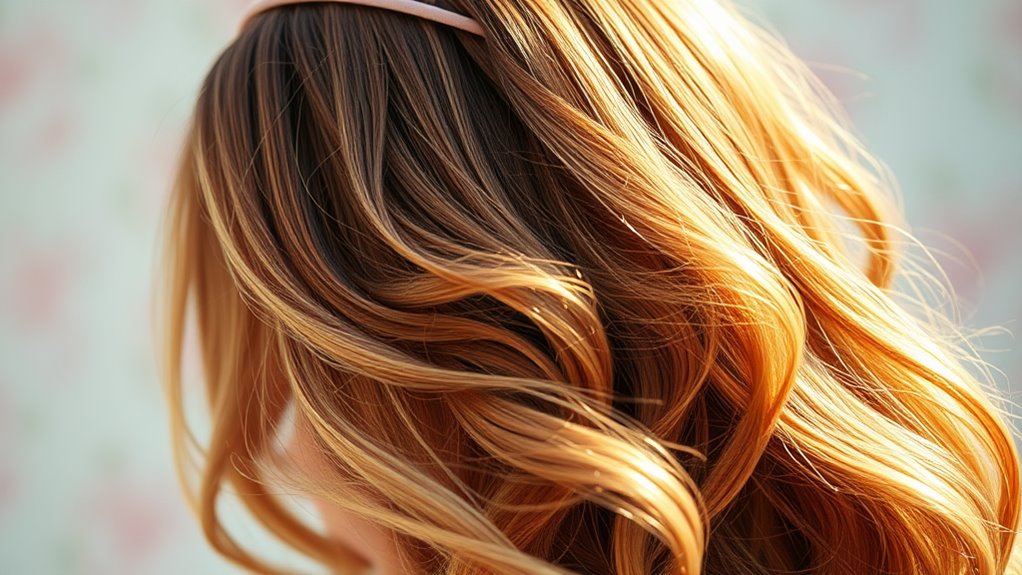This Hair Mask Combo Works Better Than Store Products
DIY hair masks can truly outshine store products by offering personalized nourishment that caters to your hair’s specific needs. With natural ingredients like coconut oil and honey, you get hydration, shine, and healthier strands without harmful additives. Plus, combining these ingredients allows you to target issues like frizz or brittleness effectively. You’ll find the transformation in your hair stunning, and there’s even more to discover about crafting the perfect hair mask combo.
Key Takeaways
- DIY hair masks allow for customized ingredients that target specific hair concerns effectively, unlike one-size-fits-all store products.
- Natural ingredients like coconut oil, honey, and avocado deeply nourish and rejuvenate hair for healthier results.
- Regular use of homemade masks fosters a stronger connection to your hair care routine and its benefits.
- Users report noticeable improvements, such as reduced frizz and enhanced shine, from consistent application of DIY masks.
- Tailored treatments provide a more authentic hair care experience, often outperforming commercial alternatives in effectiveness.
The Benefits of DIY Hair Masks
The benefits of DIY hair masks are numerous, offering you control over the ingredients and ensuring you’re using what your hair truly needs. By experimenting with a hair mask combo tailored to your specific hair type, you can target concerns like dryness, frizz, or lack of shine effectively. Unlike store-bought options filled with chemicals, your homemade blends can nourish and rejuvenate your locks more authentically. Plus, the satisfaction of crafting your own treatment fosters a deeper connection with your hair care routine. Additionally, using natural ingredients can help unlock gorgeous hair that is healthier and more manageable. Elevate your regimen and experience transformative results that store products just can’t match.
Key Ingredients for Hair Health
Several key ingredients can markedly boost your hair health and enhance the effectiveness of your DIY hair masks. Understanding these components helps you create personalized treatments that address your specific hair needs.
| Ingredient | Benefits | Usage |
|---|---|---|
| Coconut Oil | Moisturizes, reduces frizz | Use as base oil |
| Honey | Seals moisture, adds shine | Mix into masks |
| Avocado | Rich in vitamins, nourishes | Blend into mix |
| Aloe Vera | Soothes scalp, promotes growth | Apply directly |
Incorporating these ingredients into your hair care routine will not only improve your hair’s texture and appearance but also provide lasting health benefits. Master these elements, and you’ll elevate your DIY hair mask game considerably. Additionally, using a DIY growth oil blend can significantly amplify the nourishing effects of your treatments.
Crafting Your Ultimate Hair Mask Combo
Crafting your ultimate hair mask combo can be a fun and rewarding experience, especially when you tailor it to your unique hair type and concerns.
Start by identifying your hair’s needs—whether it’s hydration, repair, or volume. Choose ingredients that align with those needs; for instance, coconut oil can deeply moisturize, while honey offers shine.
Don’t hesitate to mix and match: combine a protein-rich mask with a hydrating one for balanced results. Experimenting is key; you might find that a blend of avocado, yogurt, and olive oil delivers the nourishment your hair craves. Additionally, incorporating a DIY natural hair mask can help repair split ends effectively.
Document your combinations and results to refine your technique. Mastering this process not only enhances your hair’s health but also empowers your DIY beauty routine.
Step-by-Step Application Process
To get the most out of your hair mask combo, start by preparing your hair properly. Once it’s ready, you’ll apply the mask evenly for the best results. Finally, mastering your rinsing techniques will guarantee your hair feels fresh and revitalized. Additionally, incorporating natural ingredients such as moisturizing oils can enhance the effectiveness of your hair mask treatment.
Preparing Your Hair
Before diving into the hair mask application, it’s essential to prepare your hair properly for the best results. Start by gently detangling your hair with a wide-tooth comb to avoid breakage. Next, wash your hair with a sulfate-free shampoo to remove buildup and excess oils. Rinse thoroughly, then follow with a light conditioner to keep your hair manageable.
| Step | Action |
|---|---|
| 1. Detangle | Use a wide-tooth comb |
| 2. Wash | Apply sulfate-free shampoo |
| 3. Rinse | Guarantee no residue remains |
| 4. Condition | Use a light conditioner |
These steps will guarantee your hair is primed and ready to absorb all the nourishing benefits of your hair mask.
Applying the Mask
Now that your hair is prepped, it’s time to apply the mask for maximum nourishment. Follow these steps to guarantee even coverage and ideal results:
-
Section your hair: Divide your hair into manageable sections to avoid missing spots.
-
Use clean hands or a brush: Apply the mask evenly, guaranteeing every strand gets coated.
-
Focus on the ends: The tips of your hair often need the most hydration; concentrate your efforts there.
-
Massage gently: Work the mask into your scalp and hair, stimulating blood flow and enhancing absorption.
-
Leave it on: Allow the mask to sit for the recommended time, giving it a chance to penetrate deeply.
Rinsing Techniques
Once the mask has had time to work its magic, rinsing it out properly is just as important for achieving the best results.
Start by wetting your hair with lukewarm water, which helps loosen the mask. Gently massage your scalp as you rinse, ensuring you remove all product. Focus on the roots first, then work your way down to the ends.
If needed, apply a small amount of your regular shampoo to any areas where the mask may linger. Rinse thoroughly until the water runs clear.
Follow up with a cool rinse to seal the cuticles and enhance shine. Finally, squeeze out excess water without roughing up the strands, preparing your hair for the next steps in your routine.
Frequency of Use for Optimal Results
To achieve ideal results with your hair mask combo, it’s crucial to take into account how often you use it. For most hair types, applying the mask once a week strikes the perfect balance.
However, pay attention to your hair’s specific needs. Here are some guidelines to help you optimize frequency:
-
Dry or damaged hair: Use twice a week for deep nourishment.
-
Oily hair: Apply every two weeks to prevent excess buildup.
-
Fine hair: Once a week usually suffices to avoid weighing it down.
-
Color-treated hair: Stick to once a week to maintain vibrancy and health.
-
Seasonal changes: Adjust frequency based on environmental factors, like humidity or dryness.
Incorporating nutrient-packed foods into your diet can also enhance the benefits of your hair care routine.
Mastering this frequency will elevate your hair care routine to new heights.
Tips for Storing Your Hair Mask
When it comes to storing your hair mask, choosing the right container is key to maintaining its effectiveness.
You’ll want to keep it at the recommended temperature and stay aware of its shelf life to guarantee you get the best results.
Let’s explore how to properly store your hair mask for maximum longevity and potency.
Ideal Container Choices
Choosing the right container for your hair mask can make a significant difference in its effectiveness and longevity.
To guarantee your creation stays fresh and potent, consider these ideal container choices:
-
Glass jars: Non-reactive and airtight, perfect for preserving ingredients.
-
Plastic containers: Lightweight and durable, but confirm they’re BPA-free.
-
Pump bottles: Great for easy dispensing and minimizing air exposure.
-
Silicone molds: Ideal for portioning out masks for single-use applications.
-
Dark-colored containers: Protects sensitive ingredients from light degradation.
Recommended Storage Temperature
Storing your hair mask at the right temperature is crucial for maintaining its effectiveness and preventing spoilage.
Ideally, keep your mask in a cool, dark place, away from direct sunlight and heat sources. A temperature range of 60 to 75 degrees Fahrenheit is ideal.
If you live in a particularly warm climate, consider refrigerating your mask; this can extend its shelf life and enhance its soothing properties. However, don’t freeze it, as extreme cold can alter its consistency and effectiveness.
Always check the packaging for specific storage instructions, as some ingredients might require special care.
Shelf Life Awareness
Understanding the shelf life of your hair mask helps you make the most of its benefits. To guarantee your mask retains its potency, keep these tips in mind:
-
Check expiration dates****: Always look for the date on the packaging.
-
Store in a cool, dark place****: Avoid heat and direct sunlight to prevent degradation.
-
Use clean tools****: When applying, use clean hands or utensils to avoid contamination.
-
Seal tightly: Ascertain the container is closed properly to minimize exposure to air.
-
Monitor changes: If you notice changes in color, smell, or texture, it’s time to discard it.
Troubleshooting Common Hair Issues
While hair masks can work wonders for your locks, troubleshooting common hair issues is essential to achieve the best results.
If your hair feels greasy after a mask, you might be using too much product or not rinsing thoroughly. On the flip side, if your hair feels brittle, consider adjusting the frequency of your treatments or incorporating a hydrating mask.
For frizz, look for masks with nourishing oils, and make certain you’re applying them evenly. If you notice buildup, try clarifying your hair regularly.
Always tailor your mask choice to your specific hair type—fine, curly, or thick. Mastering these adjustments will transform your hair care routine, leading to luscious, vibrant locks that reflect your efforts.
Natural Alternatives to Store-Bought Products
If you’re looking to enhance your hair care routine further, consider natural alternatives to store-bought products.
These options can provide nourishment without harsh chemicals, promoting healthier hair. Here are five effective natural alternatives you can easily incorporate:
-
Coconut Oil: Deeply hydrates and conditions, reducing frizz and adding shine.
-
Avocado: Packed with vitamins and healthy fats, it strengthens and moisturizes.
-
Honey: A natural humectant that locks in moisture and enhances shine.
-
Aloe Vera: Soothes the scalp and promotes hair growth while adding hydration.
-
Apple Cider Vinegar: Balances pH, removes buildup, and enhances shine.
Real-Life Results: Testimonials and Transformations
How can natural hair masks truly transform your locks? Many users have experienced remarkable changes, proving the effectiveness of these DIY treatments. For instance, after a month of consistent use, one user reported shinier, healthier hair with reduced breakage. Another noticed significant improvement in curl definition and overall bounce.
| User | Transformation |
|---|---|
| Sarah | Shiny, manageable hair; reduced frizz |
| Jason | Defined curls; increased volume |
| Maria | Strengthened strands; improved elasticity |
These testimonials illustrate the potential of natural ingredients to rejuvenate your hair. By investing time in these masks, you can achieve salon-worthy results right at home, enhancing both your hair’s health and your confidence.
Frequently Asked Questions
Can I Use These Masks on Colored or Chemically-Treated Hair?
Yes, you can use these masks on colored or chemically-treated hair. They’re designed to nourish and repair without stripping color. Just follow the instructions and enjoy healthier, vibrant hair that looks great!
How Long Should I Leave the Mask on My Hair?
You should leave the mask on your hair for at least 20 to 30 minutes. This allows the ingredients to penetrate deeply, nourishing your strands and enhancing their overall health and shine.
Are There Any Side Effects From Using These Natural Ingredients?
Using natural ingredients usually minimizes side effects, but some people might experience allergies or sensitivities. Always patch-test any new ingredient on your skin first, and adjust your recipe based on how your hair responds.
Can I Mix Different Types of Oils in My Mask?
Absolutely, you can mix different types of oils in your mask! Combining oils like coconut, argan, and jojoba enhances nourishment, but make sure you balance them to suit your hair type for best results. Enjoy experimenting!
How Do I Know if My Hair Needs a Mask?
You’ll know your hair needs a mask if it feels dry, brittle, or lacks shine. Look for signs like split ends and frizz. Trust your instincts; healthy hair should feel smooth and vibrant.
